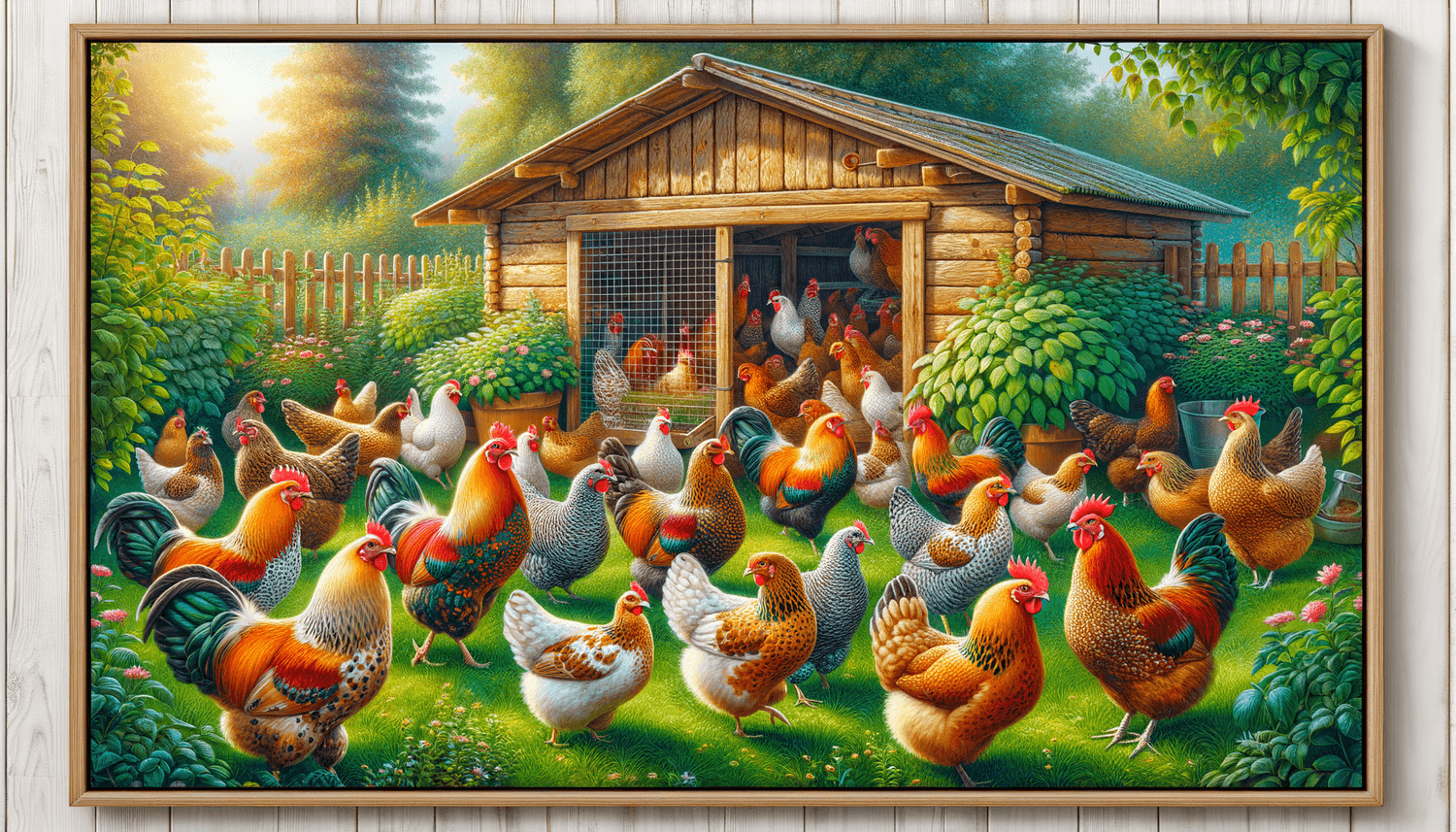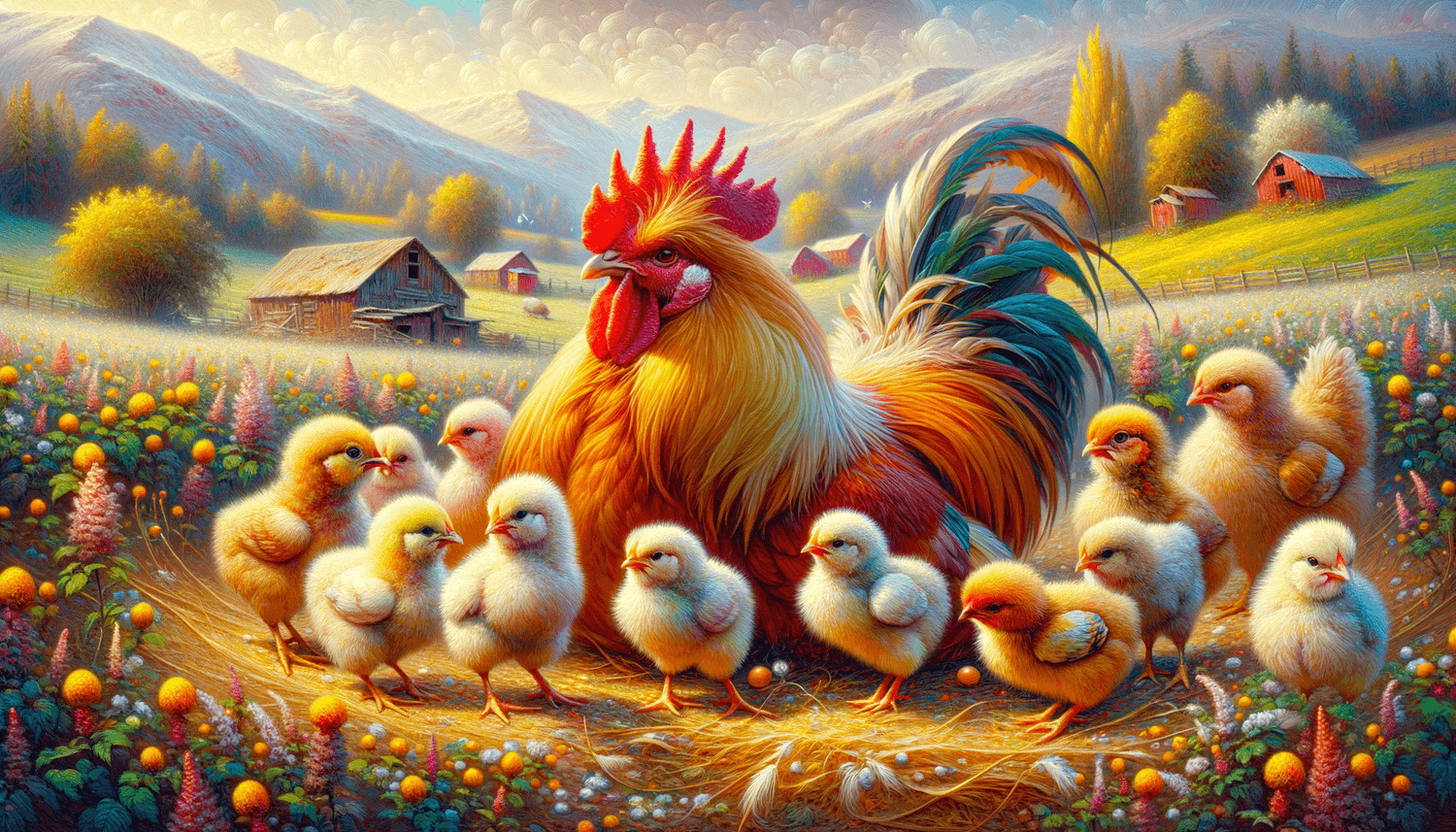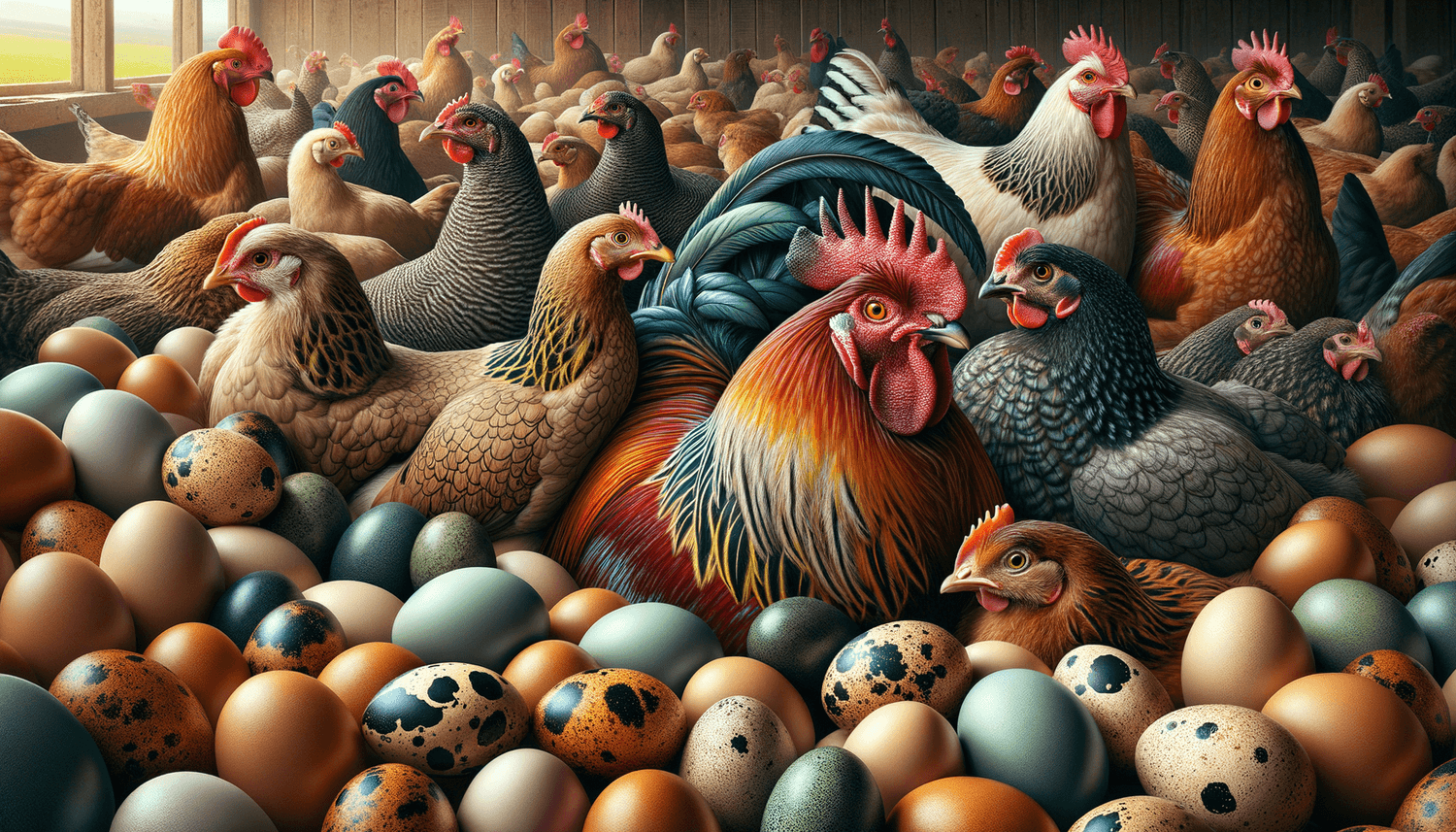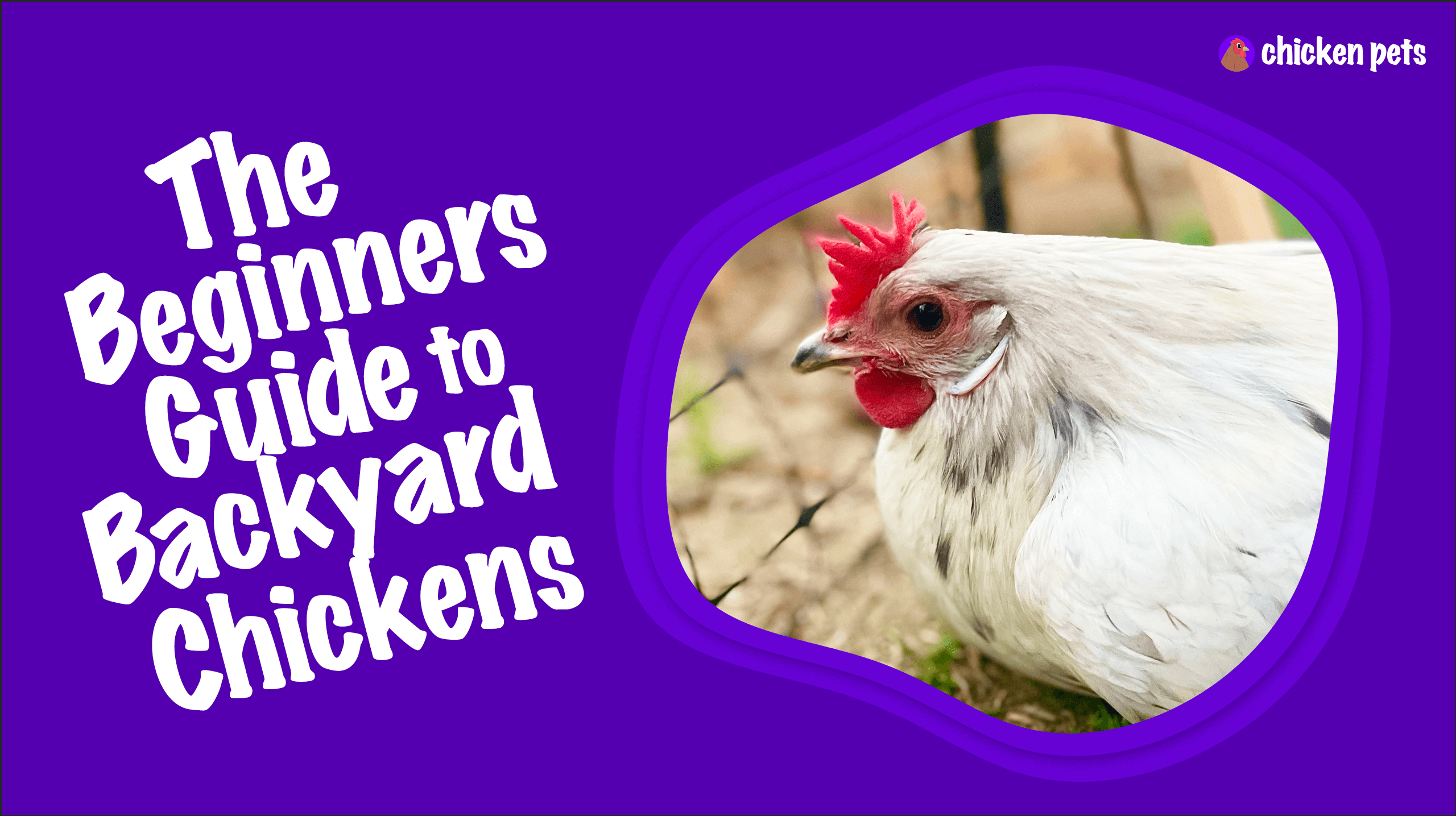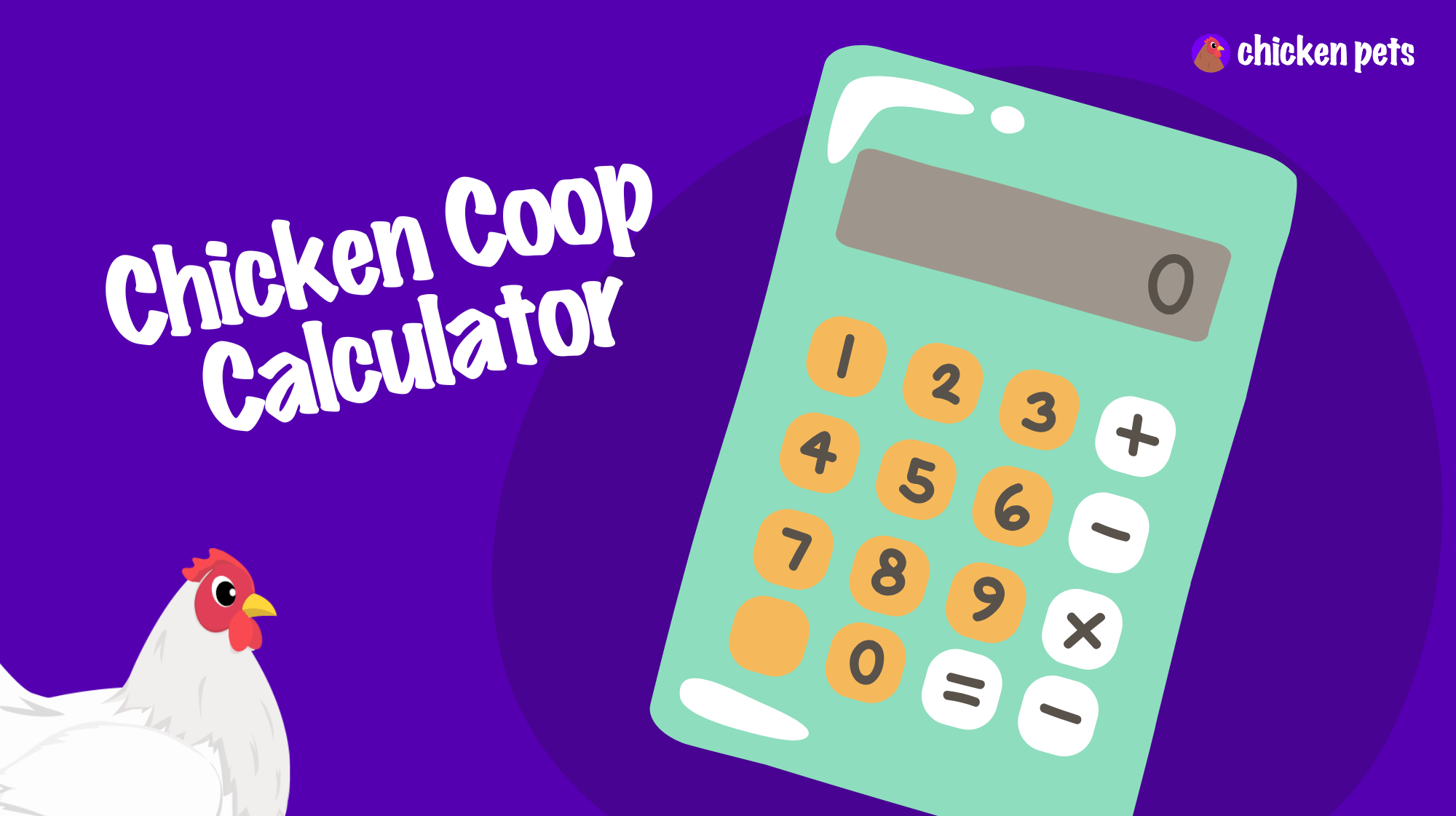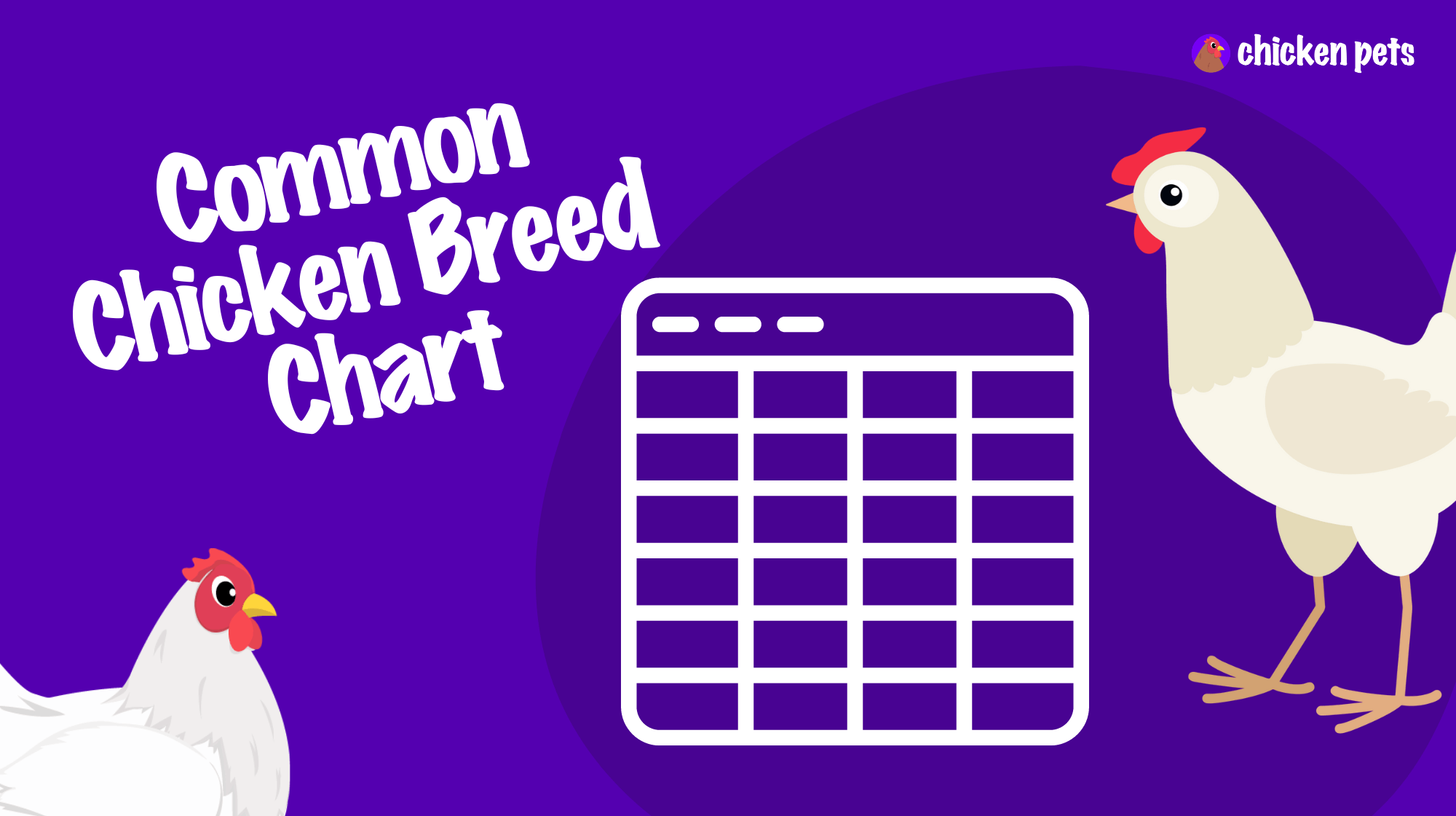Definition of Pecking
The pecking behavior refers to the repeated striking or picking of objects, food, or other chicken individuals with the bird’s beak. In the context of chickens and the poultry industry, pecking plays a significant role in establishing social hierarchies and can lead to aggressive behaviors affecting the well-being of flocks. Due to the implications of pecking behavior on the health and productivity of poultry, it is essential to manage and minimize aggressive pecking in commercial poultry settings.
Importance of Pecking for Backyard Chicken Owners and Enthusiasts
Pecking is a natural behavior in chickens; however, understanding and managing it is crucial for backyard chicken owners and enthusiasts to maintain the health and welfare of their flock. Pecking helps chickens establish a pecking order, which is their social hierarchy. This system ensures order within the group and is critical for the flock’s effective functioning.
While some pecking is normal and essential, excessive or aggressive pecking can lead to injuries, stress, cannibalism, or even death among chickens. Ensuring an optimal environment, providing enough space per bird, and offering adequate food and water sources can help reduce aggressive pecking behaviors. Moreover, monitoring the flock for signs of increased aggression is vital for early intervention and prevention of adverse outcomes.
Overall, understanding the importance and implications of pecking behavior will enable backyard chicken owners and enthusiasts to keep a happy and healthy flock, improving their productivity and quality of life.
How Pecking Works in Chickens and Poultry
Pecking is a natural and instinctive behavior in chickens and poultry that serves several purposes, such as foraging for food, preening, and establishing social structure. The mechanism behind pecking starts with the bird’s beak, which is a versatile tool for various activities. Chickens use the beak to pick at the ground when searching for seeds, insects, or other food sources, and groom their feathers to maintain cleanliness and hygiene.
Pecking also helps chickens establish a social hierarchy known as the pecking order. Birds assert dominance or submit to others by pecking or being pecked at, respectively. The establishment of a stable pecking order reduces overall aggression and stress within the flock, ensuring compliance within the group.
However, problems may arise when pecking behavior becomes excessive or overly aggressive. Inappropriate pecking can result from underlying factors such as stress, boredom, lack of space, or competition for resources. Interventions, including environmental enrichment, providing adequate space per bird, and ensuring sufficient access to food and water, can help manage and reduce aggressive pecking behaviors in chicken flocks.
Practical Application of Pecking Knowledge for Backyard Chicken Owners
Understanding pecking behaviors in chickens enables backyard chicken owners to effectively manage their flock, promoting the welfare and health of the birds. There are several practical applications of this knowledge that can contribute to maintaining harmony among the flock and minimizing aggressive pecking behaviors:
- Proper spacing: Providing sufficient space per bird helps reduce stress and competition for resources, as overcrowded conditions can trigger aggressive pecking. The recommended space is typically around 2-4 square feet per chicken inside the coop and 8-10 square feet per bird in the outdoor run.
- Environmental enrichment: Offering various activities or enrichments, such as perches, dust baths, and suitable toys, can help alleviate boredom and decrease the likelihood of chickens engaging in aggressive pecking behaviors.
- Access to food and water: Ensuring that there are multiple feeding and drinking stations can reduce competition and minimize aggressive interactions among the flock. Additionally, make sure the feed is nutritionally balanced to prevent nutritional deficiencies that may contribute to excessive pecking.
- Monitoring: Regularly observe the flock for signs of excessive pecking or injury. Early intervention can prevent more severe consequences such as cannibalism or pecking-related deaths.
- Flock composition: Introducing new birds carefully and maintaining a harmonious flock composition, including a mix of various breeds and ages, helps facilitate a stable pecking order and reduces aggressive behaviors.
By applying these practices, backyard chicken owners can utilize their understanding of pecking behaviors to create a thriving and healthy environment for their flock.
Tips and Recommendations for Managing Pecking in Chickens
Managing pecking behaviors and maintaining a harmonious flock is essential for the overall welfare and health of chickens. Here are some practical tips and recommendations to help backyard chicken owners address pecking behaviors for optimal care and management:
- Coop design: Design the chicken coop with ample ventilation, natural light, and hideout spots for chickens to escape aggressive pecking. Construct multiple roosting levels, with enough space to prevent excessive crowding during rest periods.
- Gradual introductions: When introducing new birds to the flock, do so gradually and under supervision to minimize stress and adverse pecking behaviors. Separating the new birds with a see-through barrier while allowing them to familiarize themselves with the existing flock members can help ease the assimilation process.
- Beak trimming: In situations where aggressive pecking is persistent, beak trimming may be an option to alleviate injury potential. However, this must be performed carefully and preferably by a professional to avoid causing the bird any harm or distress.
- Pinless peepers: These are devices fitted to a bird’s beak to hinder forward vision, discouraging aggressive pecking. They do not harm the bird and can serve as a temporary solution to reduce pecking-related injuries until other preventive measures are in place.
- Avoid overcrowded coops: Overcrowding can increase stress levels and aggressive pecking behaviors. Follow the recommended space guidelines to prevent overcrowding in both the coop and the run area.
- Consistent flock composition: Maintain a consistent flock composition, with minimal changes in the pecking order, to avoid upheaval that could trigger aggressive pecking behaviors.
- Debeaking: Debeaking, or beak trimming, is a practice typically used in commercial poultry farming to prevent cannibalism caused by aggressive pecking. However, it should only be considered as a last resort and under professional guidance, as it can be painful and stressful for chickens.
By implementing these practical tips and recommendations, backyard chicken owners can actively and effectively manage any pecking-related issues, improving the overall health and well-being of their flock.
Additional Information on Pecking in Chickens
Although pecking is a natural and instinctive behavior in chickens, it is important for chicken owners and enthusiasts to recognize that several factors can influence this behavior. In this section, we will cover additional information related to pecking that can be valuable for understanding and managing chickens more effectively:
- Breed differences: Some chicken breeds are more prone to aggressive pecking behaviors than others. Researching breed-specific tendencies can help in selecting the right type of bird to suit your backyard flock’s needs and reduce the chances of encountering pecking issues.
- Nutritional factors: Ensuring adequate and nutritionally balanced feed is crucial, as dietary deficiencies can lead to increased pecking behaviors among chickens. Providing a correctly-formulated poultry feed, along with clean water, is essential to maintain the flock’s health and minimize pecking issues.
- Molting and pecking: Molting, a natural process where chickens shed their old feathers and grow new ones, can cause increased stress and pecking behaviors. Providing additional nutrients, such as increased protein content during the molting period, can improve the health of chickens and keep pecking behaviors at bay.
- Health concerns: Be attentive to any signs of illness or disease among the flock, as unhealthy birds can become targets of excessive pecking by other chickens. Regular monitoring and prompt veterinary care can help prevent the exacerbation of pecking-related issues within the flock.
- Managing aggression: If a particular bird exhibits consistently aggressive pecking behavior despite all interventions, removing it from the primary flock might be necessary. In some cases, this bird can be reintroduced after a cooling-off period; however, in extreme cases, permanent separation might be needed to ensure the safety of the other birds.
By understanding these additional aspects of pecking behavior in chickens, backyard chicken owners can further enhance the welfare and well-being of their flocks, ensuring a productive and content group of birds.
Frequently Asked Questions About Pecking in Chickens
Understanding pecking behaviors in chickens is essential for their proper care and management. To help clarify further, here are some frequently asked questions and straightforward answers about pecking in chickens:
1. What is a pecking order, and why is it important for chickens?
A pecking order refers to the social hierarchy that chickens naturally establish within a flock. Through pecking behaviors, chickens assert dominance or submission to one another, leading to a more organized social structure. A stable pecking order is essential for reducing overall stress and aggression within the flock, contributing to improved health and well-being.
2. How can I prevent aggressive pecking behavior in my flock?
To prevent aggressive pecking behavior, ensure the chickens have sufficient space, food, and water; provide environmental enrichment; monitor the flock composition; and make gradual introductions of new birds. By minimizing stress and competition, you can reduce the chances of aggressive pecking behavior within your flock.
3. How much space do chickens need to minimize aggressive pecking?
The recommended space is typically around 2-4 square feet per chicken inside the coop and 8-10 square feet per bird in the outdoor run. Providing enough space will minimize stress and competition, which can, in turn, minimize aggressive pecking behaviors.
4. What other factors, besides space, can influence aggressive pecking behaviors?
Other factors influencing aggressive pecking behaviors include inadequate nutrition, boredom, environmental conditions, health issues, overcrowding, competition for resources, and breed-specific tendencies.
5. Can I use beak trimming as a preventive measure against injuries from pecking?
Beak trimming, or debeaking, can be considered for reducing injury potential from excessive pecking; however, it should be done with caution and preferably by a professional. Beak trimming is a controversial practice, as it can cause pain and is considered inhumane by some animal welfare advocates. It is generally reserved as a last resort, especially in commercial settings.
6. How can I tell if the pecking behavior among my chickens is normal?
Some level of pecking is normal among chickens to establish the pecking order or forage for food. However, if pecking leads to significant injuries, feather loss, bleeding, or increased stress levels within the flock, it may be considered excessive and needs to be addressed.
7. What should I do if one of my chickens is persistently aggressive and causing injury to others?
If a chicken is persistently aggressive and causing injuries, it may need to be temporarily or permanently removed from the flock. Consult a veterinarian or poultry expert to determine the underlying cause of aggression and develop strategies to mitigate or eliminate the issue.


